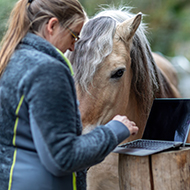Three quarters of dairy herds under threat, says research
A paper presented at the International Conference on Production Diseases in Farm Animals has suggested that three in four commercial dairy herds are at risk of ketosis.
Using data collected from 4,709 transition cows, across 130 dairy farms in the UK, Germany, France, Italy and the Netherlands, it was revealed that 39 per cent had ketosis.
It was also revealed that more than 75 per cent of the commercial dairy herds tested were likely to be at high risk of developing diseases during the calving period as a result.
Authors Geert Vertenten, of Elanco Animal Health, and Anna Berge, of the epidemiology unit at Ghent University in Belgium, used two sets of data, taken from between July 2011 and September 2012, to compile their evidence.
For their research, they monitored ketosis levels in cows seven to 21 days after calving, and found that there are some key indicators vets can look for when assessing if ketosis is causing a problem within a herd.
According to the research, indicators include if there is a five per cent or more annual incidence of displaced abomasums and if there are more than 10 per cent of cows at a body condition score of four or above, three weeks prior to calving.
If more than 40 per cent of the cows have higher than a 1.5 to one ratio of fat to protein at the first milk recording after calving, it is another indicator that ketosis is causing an issue within a herd.
"The audit data supports the observation that subclinical ketosis is indeed a hidden disease," said Vertenten. "It is important that vets can identify where there are opportunities to make positive interventions that will improve the health and welfare of the herd."



 With Strangles Awareness Week just around the corner (5-11 May), vets are being encouraged to share a survey about the disease with their horse-owning clients.
With Strangles Awareness Week just around the corner (5-11 May), vets are being encouraged to share a survey about the disease with their horse-owning clients.